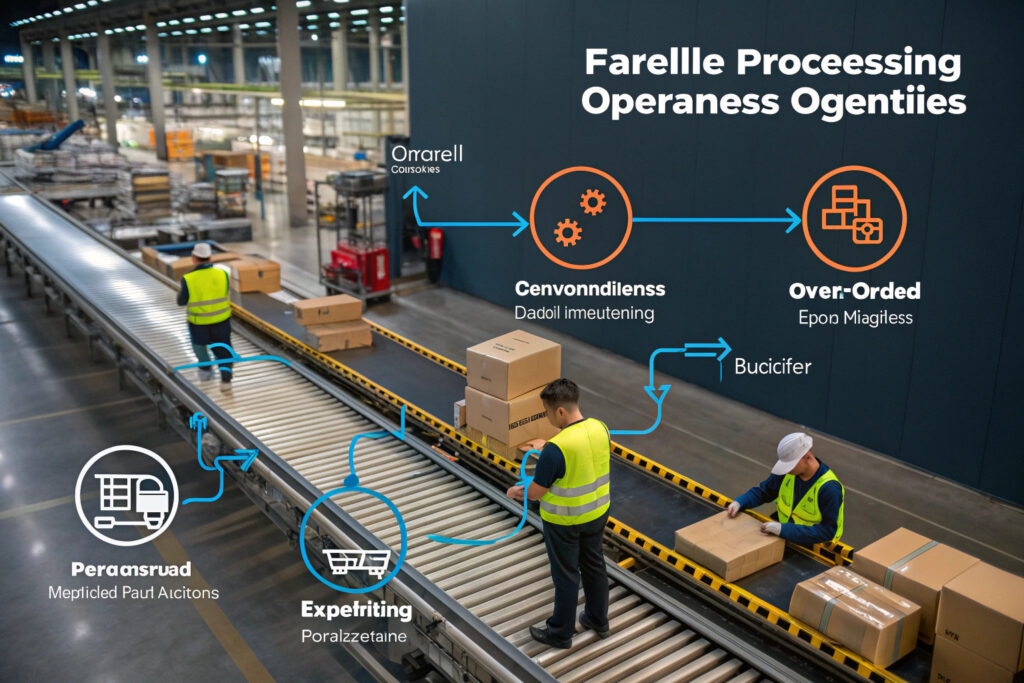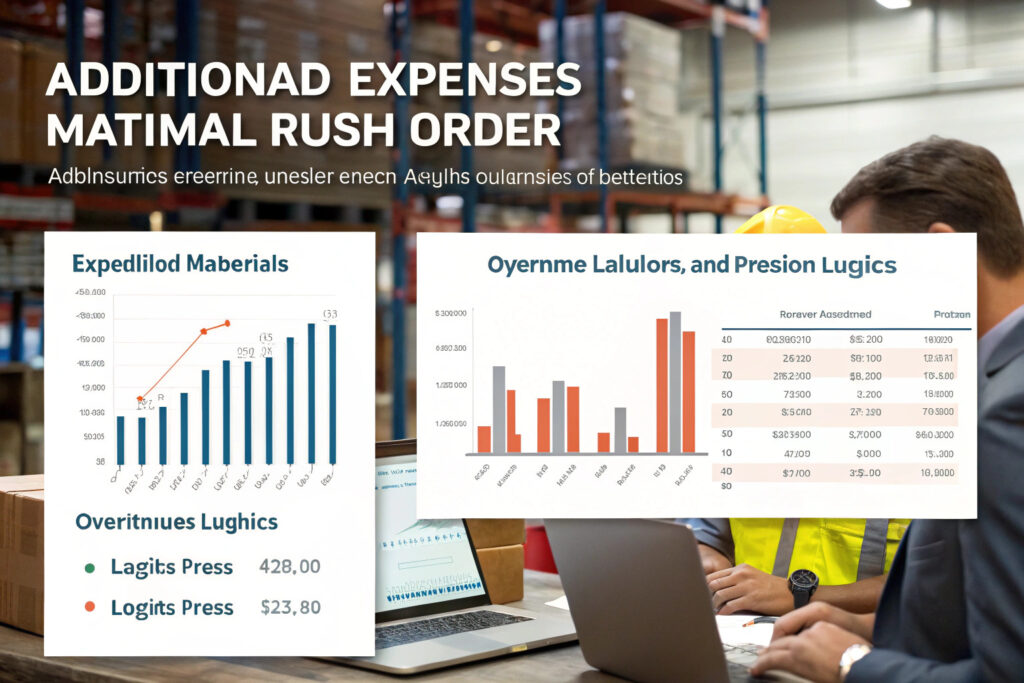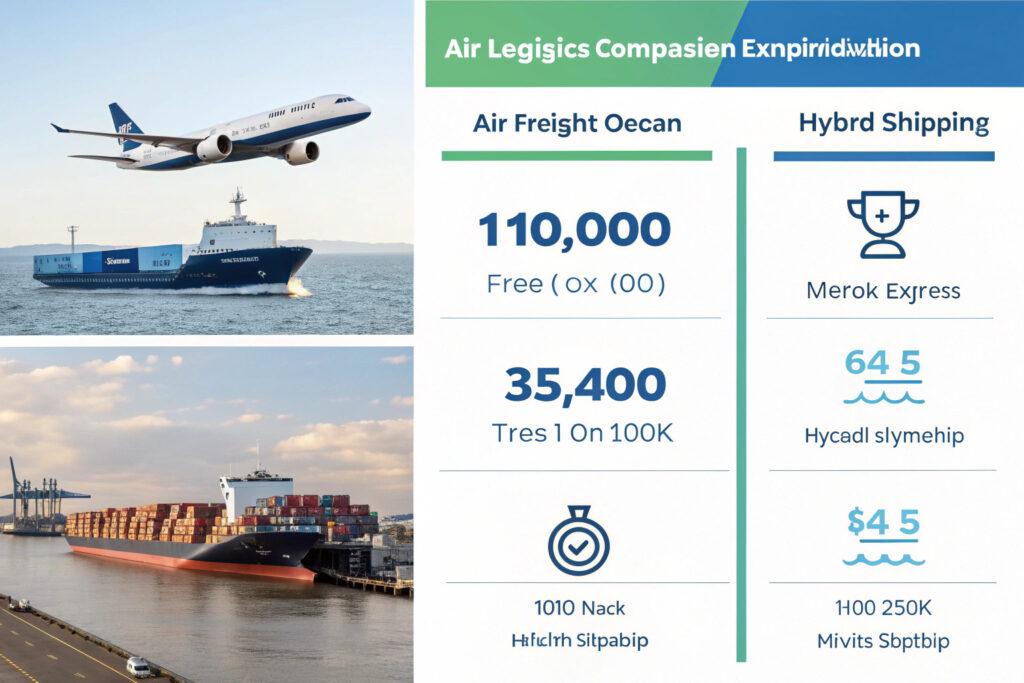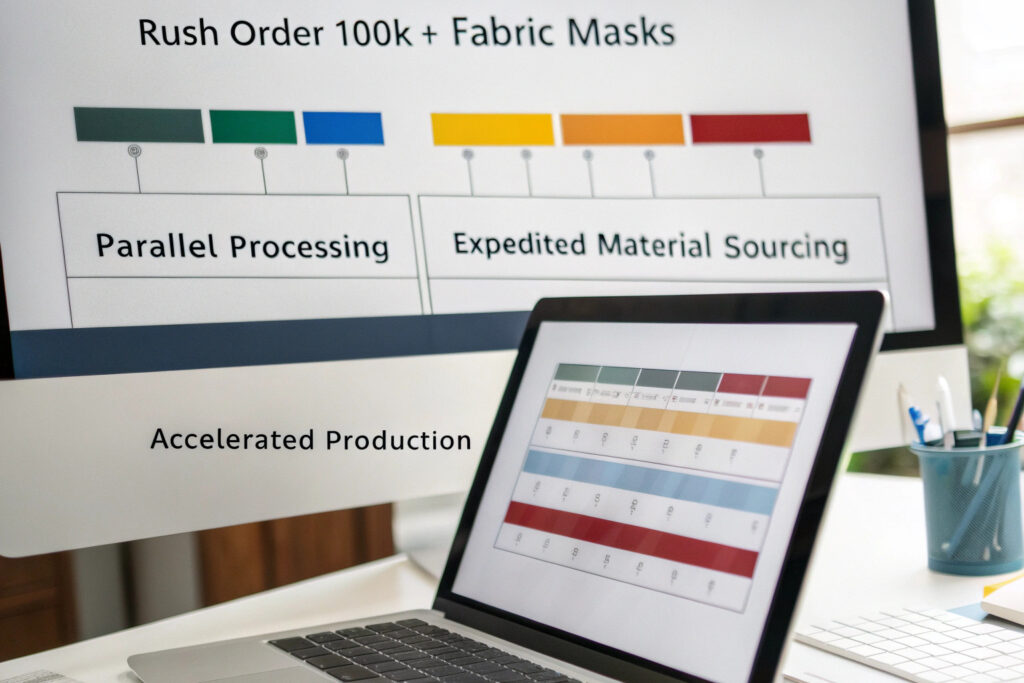Rush orders of 100,000+ fabric masks represent one of the most challenging scenarios in textile manufacturing, requiring exceptional supply chain coordination, production flexibility, and logistical precision. While standard production for this volume typically requires 45-60 days, rush orders can compress this timeline significantly—but at a substantial cost premium and with important trade-offs in customization options.
Rush orders of 100k+ fabric masks typically require 18-28 days from order confirmation to shipment, with the most aggressive timelines achieving 14-16 days through parallel processing, premium logistics, and simplified designs using available materials. The exact timeline depends on material availability, production complexity, and the manufacturer's current capacity utilization.
Achieving these compressed timelines requires manufacturers to bypass normal production scheduling, utilize premium shipping methods, and often operate facilities 24/7 with multiple shifts. The feasibility of specific rush timelines depends heavily on how many of the normal production constraints can be overcome through strategic planning and additional investment. Let's examine the specific factors that determine achievable lead times and the cost implications of various acceleration strategies.
What Factors Determine Achievable Rush Timelines?
Multiple production and supply chain elements influence how quickly 100,000+ masks can be manufactured and delivered.

How does material availability impact rush timelines?
Stock material utilization is the single biggest factor in achieving aggressive timelines. Orders using fabrics, elastics, and components from manufacturer's existing inventory can save 12-18 days compared to custom material production. Our fastest rush orders (14-16 days) exclusively use our 150+ stock fabric options and standard components. Custom materials typically add 10-15 days for dyeing, finishing, and transportation alone.
What production capacity factors matter most?
Current factory utilization determines whether manufacturers can immediately allocate production lines or must wait for current orders to complete. Factories operating at 70-80% capacity can typically accommodate rush orders within days, while those at 90%+ capacity may require 5-7 days just to clear space. Our production network approach allows us to shift rush orders between facilities based on current capacity availability.
What Acceleration Strategies Enable Faster Delivery?
Manufacturers employ specific strategies to compress normal production timelines for rush scenarios.

How does parallel processing reduce timelines?
Simultaneous material preparation and production planning eliminates the sequential delays of normal manufacturing. While fabric is being cut, production lines are being configured, and packaging is being prepared—activities that normally happen consecutively. Our parallel processing approach has reduced production time by 35-40% compared to traditional sequential methods for large rush orders.
What role does overtime and multiple shifts play?
24/7 manufacturing operations with three 8-hour shifts can complete production in one-third the calendar time of single-shift operations. This approach typically adds 25-40% to labor costs but can reduce production time from 15 days to 5 days for the same volume. Our emergency production protocol activates 24/7 operations for qualified rush orders, with clear cost implications detailed upfront.
What Are the Realistic Timeline Breakdowns?
Understanding where time is allocated helps identify opportunities for acceleration and sets realistic expectations.

What is a typical 21-day rush timeline?
A realistic 21-day timeline might allocate: Days 1-3 - Material confirmation and preparation; Days 4-14 - Production across multiple lines; Days 15-17 - Quality control and packaging; Days 18-21 - Customs clearance and air shipping. This represents an aggressive but achievable timeline for orders using 80%+ stock materials with minimal customization.
How does a 28-day timeline differ?
A 28-day timeline allows for: Days 1-7 - Limited custom material sourcing; Days 8-20 - Staggered production across available lines; Days 21-24 - Comprehensive quality control; Days 25-28 - Expedited ocean or air-ocean hybrid shipping. This timeline accommodates moderate customization while still representing a 40-50% reduction from standard lead times.
What Cost Premiums Should You Expect?
Rush manufacturing incurs significant additional costs across multiple areas of the supply chain.

How much do expedited materials increase costs?
Priority material sourcing typically adds 15-25% to fabric and component costs, as suppliers charge premiums for immediate production and expedited shipping. Custom materials become particularly expensive—we've seen 40-60% premiums for rushed custom dyeing and finishing. Our transparent costing separates these expedite fees from base material costs.
What are the labor and operational premiums?
Overtime wages and shift premiums typically increase labor costs by 30-50% for rush production. Additionally, accelerated production often operates at 85-90% efficiency rather than the 92-95% achievable at normal pace, increasing per-unit costs. Our rush production typically carries a 25-35% manufacturing cost premium compared to standard timeline production.
What Customization Limitations Apply to Rush Orders?
The acceleration of rush manufacturing requires compromises in design flexibility and customization options.

What design elements are most challenging to rush?
Complex construction features like multiple layer combinations, specialized sewing operations, or intricate patterns significantly extend production time. Similarly, custom-developed materials including specially dyed fabrics, printed patterns, or unique components typically cannot be rushed. Our rush order guidelines clearly identify which customizations are feasible within compressed timelines.
How does standardization enable faster production?
Using existing patterns and templates eliminates the 3-5 days typically required for pattern engineering, sample approval, and production line configuration. Our most successful rush orders utilize our 12 standard mask patterns with customizations limited to fabric selection and branding elements. This approach has enabled us to maintain 14-16 day timelines for 100k+ orders.
What Logistics Options Balance Speed and Cost?
Shipping method selection significantly impacts both timeline and cost for large rush orders.

When does air freight make sense for 100k+ masks?
Full charter air freight becomes economically viable at approximately 4,000-5,000 kg (representing 100k-120k masks), with transit times of 3-5 days door-to-door but costs 4-6 times higher than ocean shipping. This option is typically reserved for extreme emergencies where the business impact of delays outweighs the substantial cost premium. Our logistics team calculates the breakeven point where air freight justifies its premium.
What hybrid approaches offer balanced solutions?
Air-ocean combinations that ship initial quantities by air (20-30k units) with the balance following by expedited ocean can provide rapid initial delivery while controlling total costs. This approach typically delivers first units in 7-10 days with complete delivery in 21-28 days at 40-60% of full air freight costs. We've successfully implemented this strategy for clients needing partial inventory quickly while awaiting full order completion.
Conclusion
Rush orders of 100,000+ fabric masks typically require 18-28 days from order confirmation to delivery, with the most aggressive timelines achieving 14-16 days through parallel processing, premium logistics, and simplified designs using available materials. The achievable timeline depends heavily on material availability, production complexity, and the manufacturer's current capacity. These compressed timelines come with significant cost premiums of 25-50% above standard production and require compromises in customization options.
Success with rush manufacturing requires clear communication about trade-offs, realistic timeline expectations, and understanding that certain design elements simply cannot be accelerated. The most successful rush orders embrace standardization while utilizing manufacturers with proven rush production systems and flexible capacity.
Facing a tight deadline for 100k+ fabric masks? Contact our Business Director, Elaine, at elaine@fumaoclothing.com to discuss our rush manufacturing capabilities and receive a detailed timeline and cost analysis for your specific requirements. We'll provide honest assessment of what's achievable within your timeframe while maintaining our quality standards.


























